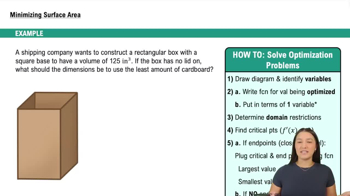A 1.5-mm layer of paint is applied to one side of the following surfaces. Find the approximate volume of paint needed. Assume x and y are measured in meters.
The spherical zone generated when the curve y=√8x−x^2 on the interval 1≤x≤7 is revolved about the x-axis





